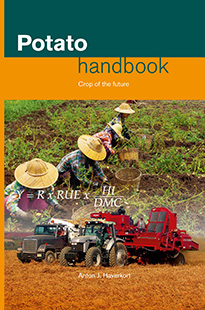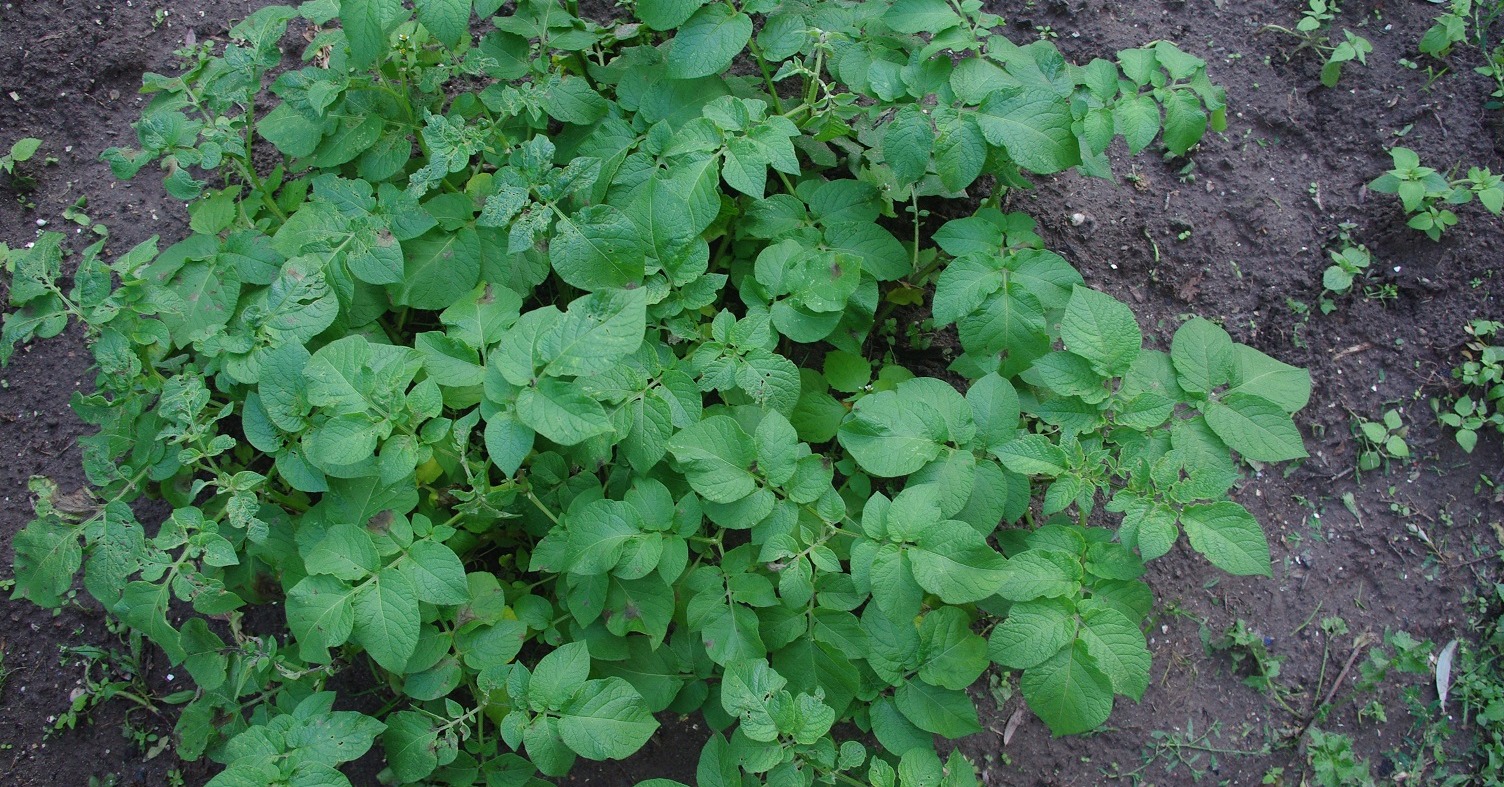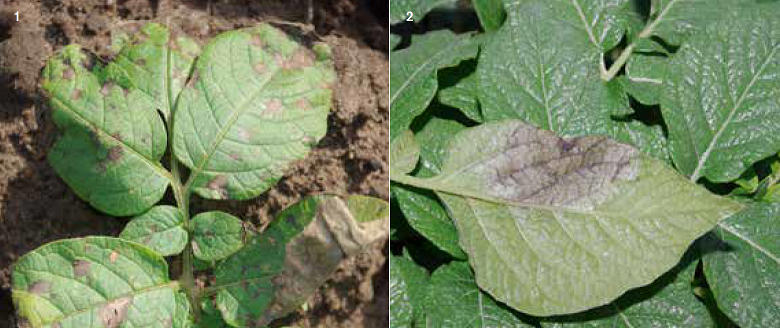Already a subscriber? Activate your premium account

Potato Handbook

In regions where potatoes are grown year-round, such as in tropical highlands, there are always spores of the disease present to infect newly emerging crops. In temperate climates in spring, the sources of inoculum are seed tubers, dumps and cull piles, volunteer plants and asexual zoosporangia or sporangia (single sporangium) blown from elsewhere by the wind. In regions of the world where there are two mating types of Phytophthora, they reproduce sexually and produce oospores next to sporangia and zoosporangia. These can remain in the soil for years and are a source of inoculum.
The reproductive asexual cycle is as follows. A zoospore or sporangium lands on a leaf. When the leaf is wet for some seven hours, the spore germinates, enters the leaf through the epidermis and cell wall and forms mycelium that grows between the cells. Next it enters the cells where it forms a feeding structure (haustorium). Later, the organism can also feed on dead tissue. In order to reproduce, it produces sporangiophores (carriers of sporangia) which protrude through the stomata and are visible as white fuzz.
Sporangiophores produce three types of spores: sporangia, zoosporangia that contain zoospores (that start the cycle as described above) and they also form oosporangia containing oospores and sporangia. Zoospores and sporangia from oospores germinate and infect the potato leaves in a fashion similar to the spores formed outside the oospores. Oospores that survive in the soil are splashed with raindrops and their zoospores and sporangia infect plants up to years later. Tubers become infected when sporangia are washed from the leaves and come into contact with the tubers. Initially, they cause a dry rot, but there are also secondary infections with bacteria and fungi to end up as wet rot.

Events
©2015 - 2024 Potatoworld | Webdesign and realisation COMMPRO